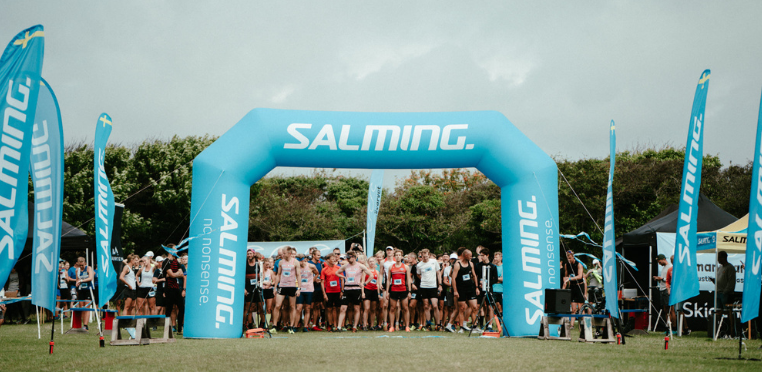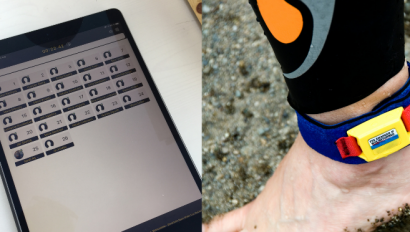What Should You Do When Your Timing System Fails? Backup Timing Systems and Methods

If you imagine the worst thing that could happen during your race, a malfunction of the timing system is probably near the top of that list. You are suddenly blind, not knowing where any racers are on the course and you’re hearing spectators complain about inexistent live tracking and split times you promised in the online broadcast of the race… not to mention, your participants getting the wrong finish times, or worse, none at all!
Luckily, there are ways to avoid this scenario. First of all, by making sure you use a reliable timing system or hire an RFID Timing partner that you trust to do things right. If you want extra security, you should also implement a backup method. This article runs through common timing backup methods to ensure a smooth race with happy spectators and participants.
Why Do You Need a Backup Timing System?
Having a backup system not only takes off a load of stress and makes sure your finish times and results are correct, but it can also make your race safer. As a race organizer, you are always responsible for the safety of your participants and it’s a good idea to know everyone is on the course and make sure no one ends up lost. A backup system can be used to make sure you know where your racers are and enable you to act quickly in case of emergencies. This is especially important in longer races where controls may be spread out and participants are out competing for several hours.
On the other hand, in shorter races, the timing is important but from the perspective of correctness. For a 5K race, for instance, finish times may only differ by a few hundredths of a second, and you need to make sure things are correct so there are no surprises when you call up the winners to the podium.
Many RFID Timers also bring their own, backup system, so you may not need to organize one yourself. Make sure you ask your provider about their methodology before you commit to using a service.
Backup Timing Systems and Methods
Photo Finish Timing Backup System
A classic way to make sure you record the finishers in the right order is to set up a camera at the finish line and let it roll from the first finish to the last. This way, you know the order racers finished in and you can also look at the time the video shows as someone crosses the line, and calculate the finish time. It is even more convenient if you have the camera record both the finish line and the race clock at the same time. Then, you can freeze the picture and easily see the final finish time for any given racer..
If you feel ambitious, it is also possible to place cameras at split checkpoints. Just make sure you or someone else remembers to turn them on!
In terms of cameras to use, anything will do, even just a mobile phone with a tripod. Just make sure the battery or storage doesn’t run out.
Backup with GPS Tracking & Timing
Many organizers add GPS Tracking to their races. Normally, racers have to carry a GPS tracking device or download apps on their mobile phones. As race director, you then have full control of where each racer is on the course, even if your timing checkpoints should fail. GPS tracking also adds an extra touch for spectators, as they can then follow their friends, family, leaders or loved ones online or in an app.
On the downside, GPS tracking can be expensive, especially if you have lots of participants. You usually have to pay per device, and usually hire or purchase is done to the nearest 10 devices. If you ask participants to use their smartphones, it can be cheaper, but not all races (like swimming and triathlon) allow you to carry your phone with you. For biking and running races, it can work better. Read more about GPS Tracking and if it is right for your race.
GPS Tracking is undergoing changes and the technology is improving every year. You now start to see entire timing systems based on GPS technology. This is very handy, as you simply determine your timing checkpoints by plotting them digitally with GPS coordinates. In other words, no need to bother with setting up heavy RFID equipment and portals along the course. Read more about GPS Timing technology and sign up for beta testing with RaceID.
Backup or Time with Barcode or NFC Controls
A slightly less popular timing method is to provide participants with barcodes or NFC (Near Field Communication) tags on their wrists, and require them to pass (very) close to controls at each timing checkpoint. Organizers sometimes use these timing methods as the principal method, but it can also be used sparingly as an alternative backup method if you want to be on the safe side.
Manual Volunteer Backup
Perhaps the most common way to back up an RFID timing system, or another timing method, is to place out a few volunteers along the course to manually tick or record racers as they pass by. This method is limited to how big your race is. If you organize a race with thousands of participants, it is not realistic to manually record all participants.
Backup with a Timing App
A slightly easier alternative to the manual backup is to use a Timing App. You still need volunteers to stand at the checkpoints and click-to-record participants as they pass by, but it will be much easier as there’s less manual work and you don’t have to use a pen, paper or computer to write down names and times. All data is in-app on the phone or tablet, and times will automatically be recorded and uploaded to the live timing as your volunteers record the bibs passing. Read more about Timing Apps.
Summary: Backup Timing for Your Race
Remember that a backup system for timing should not be too much more work. The backup system doesn’t have to be hyper-accurate and record everything, just to be an extra redundancy in some circumstances. It helps you stay calm and keeps your racers safe. Of course, you have to determine how serious to be about backup timing depending on the type of race you have. If you have an important qualifier race in a series or are part of a national competition or cup, the results may be of more importance than just determining the winner and the podium spots. If you run a short and leisure-focused race where participants come for a good time or to do a training session, a backup timing method is probably unnecessary. If you are curious to explore RFID providers for your race, take a peek at our big review of international Chip Timing Providers.


